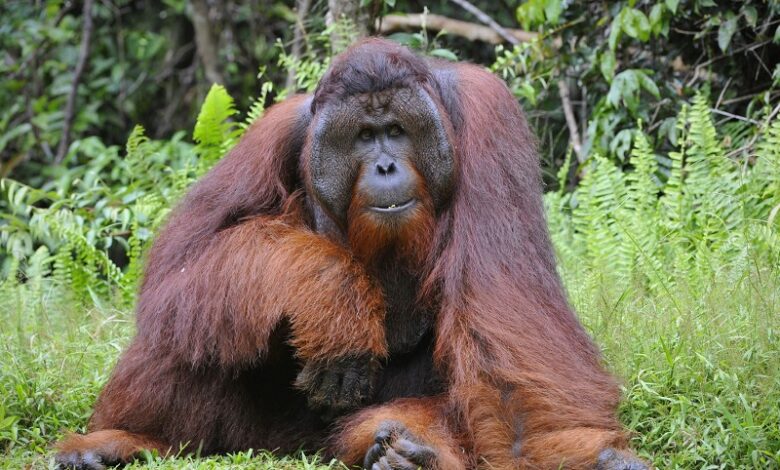Orangutan’s Healing Ritual: A Glimpse into Primate Medicinal Practices

In a groundbreaking study, researchers at the SuaqBalimbing research site in Indonesia reported evidence of the first case of a wild animal treating its wound with medicinal plants. The study, led by Isabelle Laumer from the Max Planck Institute of Animal Behavior (MPI-AB), Germany, sheds light on the healing rituals of Sumatran orangutans.
The research site, a protected rainforest area inhabited by approximately 150 critically endangered Sumatran orangutans, provided the backdrop for this remarkable observation. Laumer and her team, which included researchers from Universitas Nasional, Indonesia, documented the behavior of a male orangutan named Rakus, who had sustained a facial wound, likely during a territorial dispute with a neighboring male.
Three days after sustaining the injury, Rakus exhibited a fascinating behavior—he selectively chewed leaves of a climber plant known as Akar Kuning (Fibraurea tinctoria) and applied the resulting sap onto his facial wound. This behavior was observed repeatedly over several minutes, with Rakus meticulously covering the wound with chewed leaves as a final step.
Laumer explained that Akar Kuning and related liana species are known for their medicinal properties, including pain relief and anti-inflammatory effects, which are crucial for wound healing. These plants have been used in traditional medicine across Southeast Asia to treat various ailments such as malaria, dysentery, and diabetes.
Remarkably, the researchers observed no signs of wound infection following Rakus’s treatment. Moreover, the wound closed within five days and fully healed within a month. Laumer noted that Rakus also exhibited increased rest during the healing process, which is known to facilitate wound healing by promoting growth hormone release and cell division.
The intentional nature of Rakus’s behavior, coupled with his selective treatment of the facial wound and the repeated application of plant material, suggests a sophisticated understanding of medicinal plants and their healing properties. This observation challenges previous notions about the extent of animal cognition and their ability to engage in complex health-related behaviors.
While several primate species have been observed using plants with medicinal properties, this is the first instance of a wild animal applying them directly to a recent wound. The researchers speculate that such medical wound treatment may have arisen in a common ancestor shared by humans and orangutans, hinting at a shared evolutionary history of medicinal practices.
The authors propose that there may be a common underlying mechanism for the recognition and application of substances with medical properties to wounds, dating back to our last common ancestor with orangutans. This suggests that the use of medicinal plants for wound healing may be a fundamental aspect of primate behavior, with implications for our understanding of human evolution and medical practices.
In conclusion, the study offers a fascinating glimpse into the healing rituals of orangutans and highlights the potential for shared medicinal behaviors across primate species. Further research is needed to explore the extent of such behaviors and their evolutionary significance in the animal kingdom.






